Here’s a simple compost pile design:
Unlike many of my composting experiments, this is a traditional compost pile of alternating layers of carboniferous and nitrogenous materials. The boundary is made from cut limbs hammered into the ground and woven about with palm fronds.
I also added homemade biochar to this compost pile to get it “charged” for future projects.
The C/N ratio in this pile should be about perfect with the greens and browns but if it doesn’t get hot enough I can always pour on some diluted urine to raise the nitrogen levels.
This simple compost pile can be set up anywhere in about an hour using local materials. I’ve done this in a cornfield before, cutting and chopping old stalks for the base, then adding on layers of greens and browns. Come back a few months later and harvest your compost!
Here’s a breakdown on the whole process.
How to Build a Simple Compost Pile with Local Materials
Step 1: Cut Stakes
I used sticks cut from some unidentified roadside nitrogen-fixing tree locals use as a windbreak.
It’s a soft wood and easy to chop, but you can use anything you like from bamboo to oak to PVC. 4-5′ lengths are good, as you want the pile to reach at least 3′ tall and you need some stake depth to drive into the ground.
Step 2: Install Stakes and Put Down Rough Material
I had already cut up some rough material and thrown it down before putting in the stakes, but it’s better to put in the stakes first.
Cornstalks, hedge trimmings and other rough materials filled with air pockets make a good compost pile foundation. In the case of this pile, I used chopped twigs and leaves from the nitrogen-fixing trees used for the stakes, some jasmine and hibiscus trimmings and a papaya tree.
Step 3: Weave the Sides
I can’t make a good basket, but I’m not bad at simple compost pile weaving.
The idea is to hold in the compost while still allowing some air through into the pile. This also supports the stakes. In a temperate climate you could replace the palm fronds with grape vines, tall grasses, cattails or other plant material.
Step 4: Add some Browns
Gotta get that carbon!
As I state in the video, these leaves have a lot of dirt in them. That soil contains microbes which will help break everything down, so I didn’t bother adding a few shovelfuls of soil as I normally would when making a compost pile.
Step 5: Add some Greens (and Keep Layering!)
Get that nitrogen in there!
Grass clippings are a really good compost pile starter – if you have them, use them.
Just keep laying greens and browns until you’ve made the pile nice and tall. You can also throw in biochar if you have it.
It won’t really help the composting process, but my hope is that it will be charged up with nutrients, bacteria and fungi as the pile rots.
Step 6: Water Well
This is important: composting uses a lot of water, so get some on at the beginning. If most of your materials are dry, you might want to water each layer as you build the pile. I was too lazy to do that so I soaked it from the top before finishing the final covering layer.
Step 7: Cover the Pile
Covering the pile holds in heat and moisture. Sticking with my locally available materials, I used banana leaves.
You can also use a tarp or just another layer of brown leaves. Compost really isn’t a finicky thing to make – it’s will work, even if you don’t do anything “right.”
It’s going to decay and become humus over time, hot or not, perfect ratios or not.
In a few months you can turn this pile over and sift out the good stuff – or just push it around over the garden bed beneath and get planting.
Get out there and get composting – a simple compost pile is all you need.
David The Good is a Grow Network Change Maker, a gardening expert, and the author of five books you can find on Amazon: Compost Everything: The Good Guide to Extreme Composting, Grow or Die: The Good Guide to Survival Gardening, Totally Crazy Easy Florida Gardening, Create Your Own Florida Food Forest, and Push the Zone: The Good Guide to Growing Tropical Plants Beyond the Tropics. Find fresh gardening inspiration at his website TheSurvivalGardener.com and be sure to follow his popular YouTube channel.
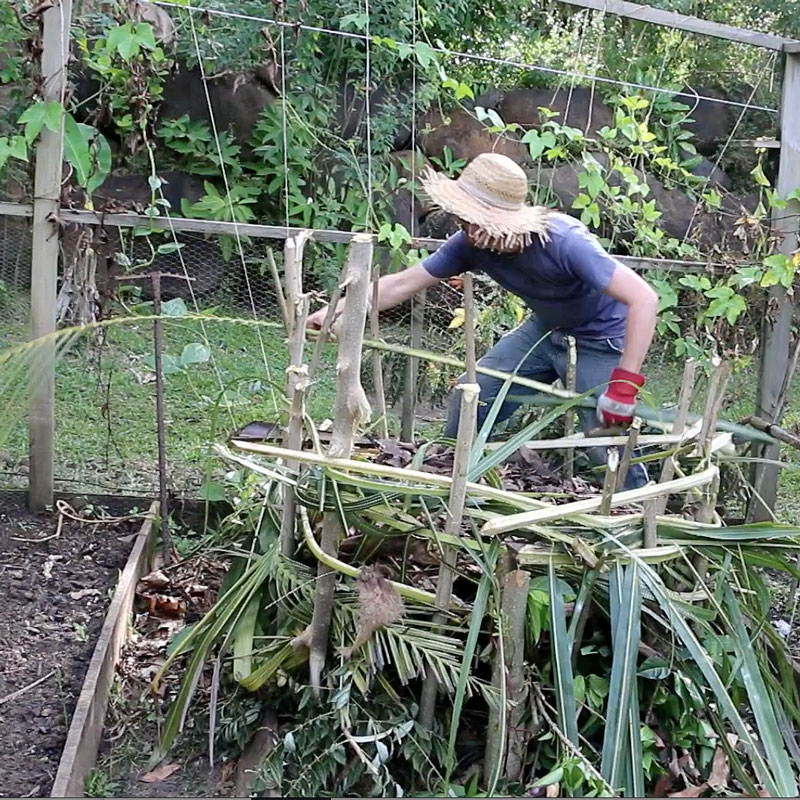
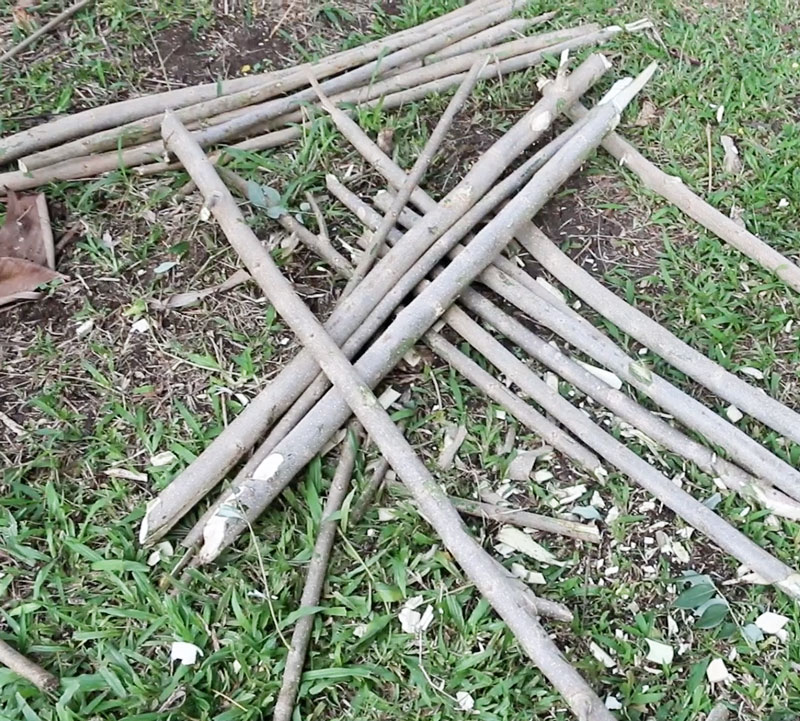
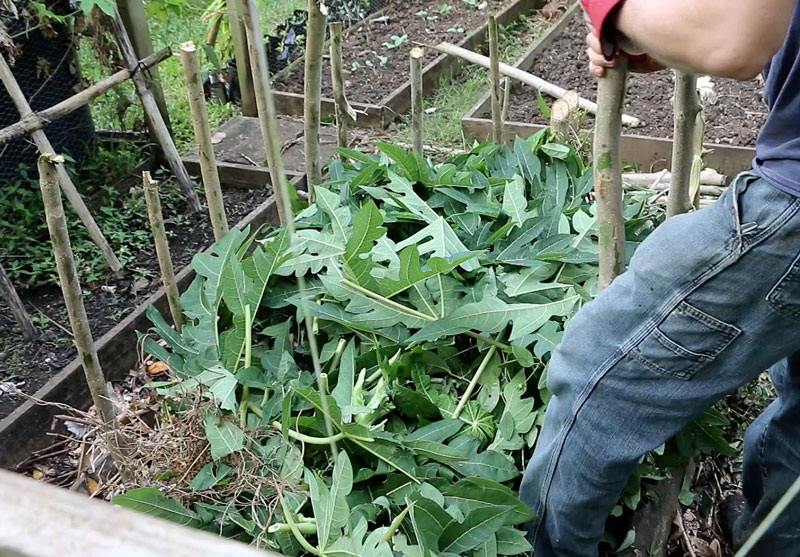

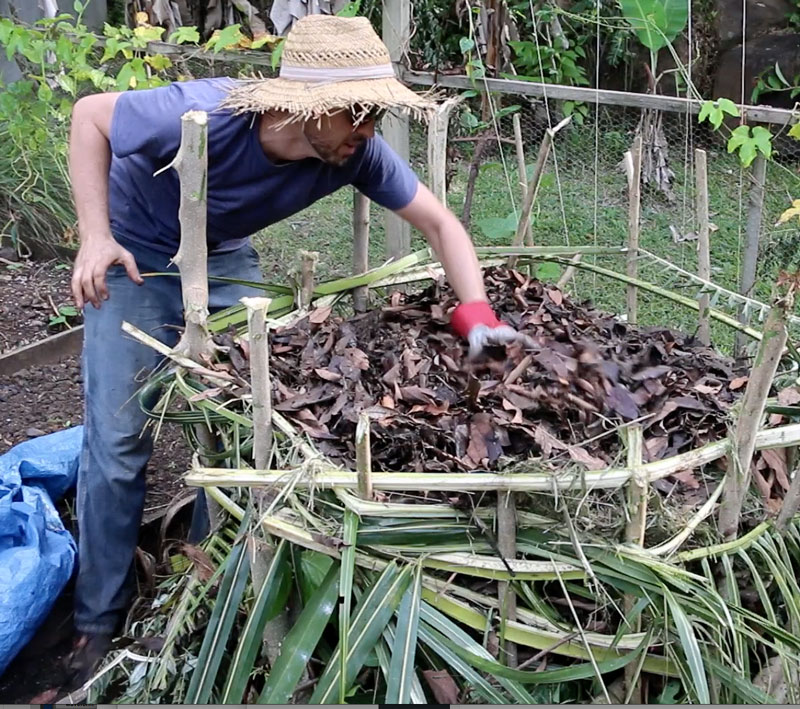
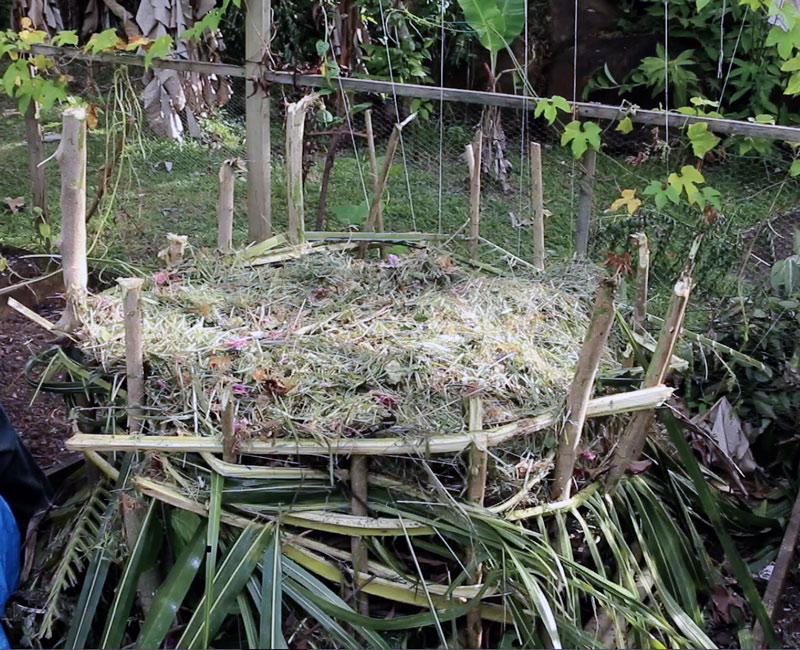
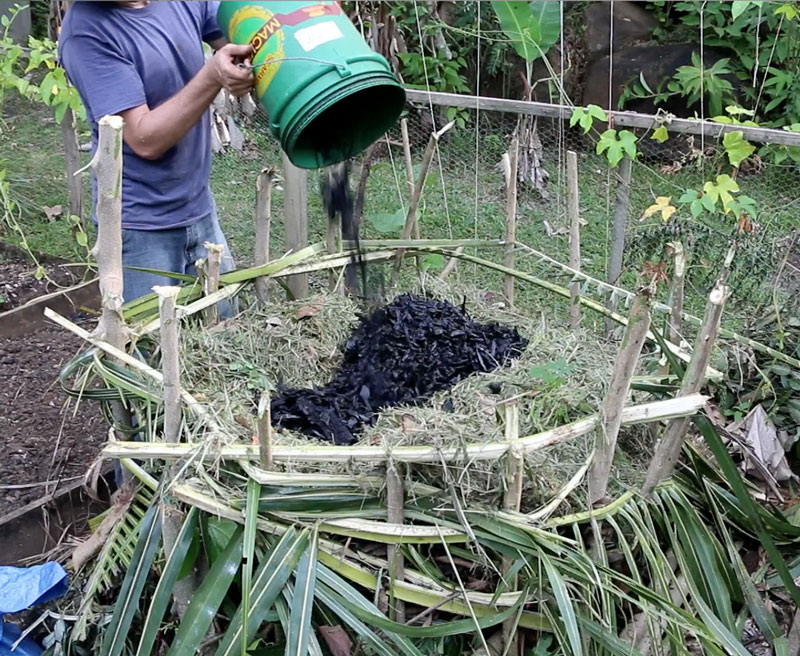
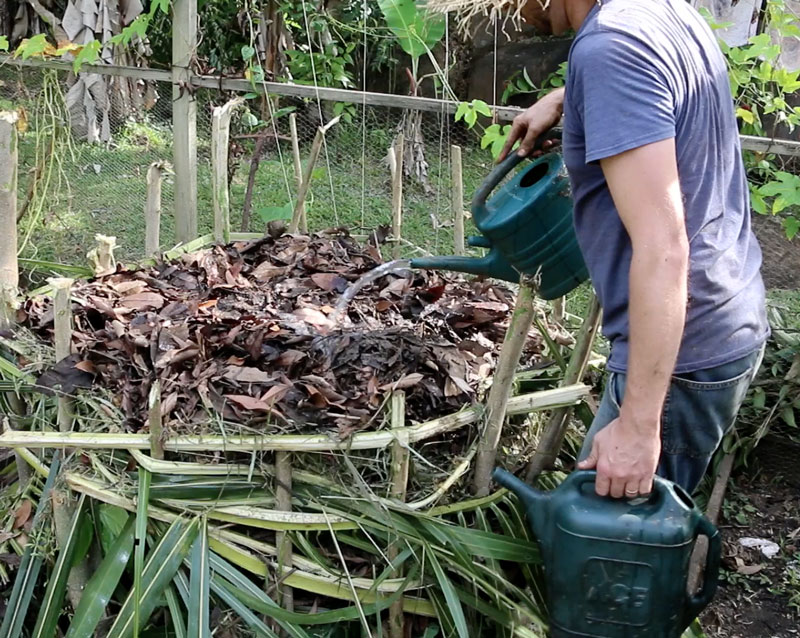
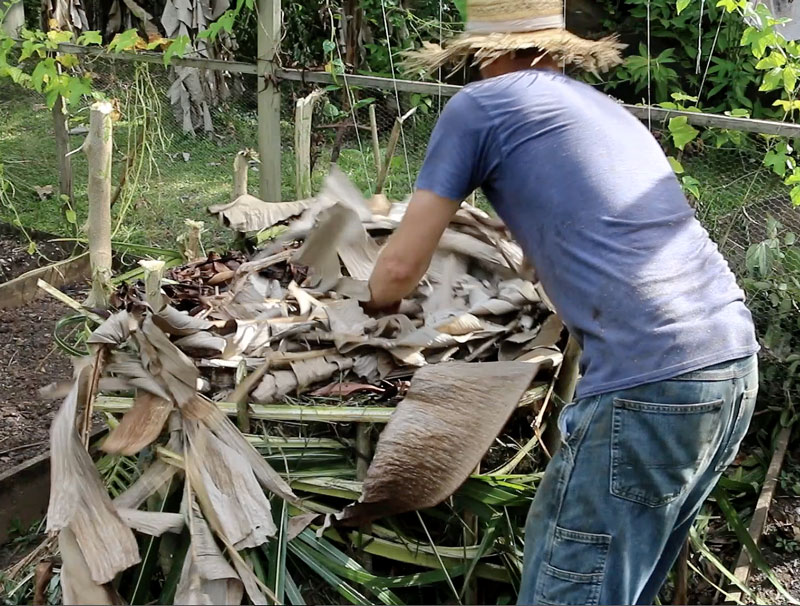








COMMENTS(15)
As always, David – an innovative and imaginative idea, all while using resources available right around us. Bravo!
What I wouldn’t give to have a few spare papaya trees in my Northwoods forest! I don’t there would be many adaptations to make this work anywhere, even in Zone 3. Might take a bit more time? Maybe position the pile just outside the canopy?
I like the fact that this uses readily available materials, so you don’t need to pay for a bin. I don’t see too many papaya or banana trees growing here in Zone 4, but I do have cattails, tall, tough grasses, and plenty of saplings that need to be thinned out. Now, if the snow would only melt, I could get started.
I think the use of all natural materials lets the compost pile blend in more easily with the landscape. I wonder if I could plant some tall flowers, pole beans, peas, or some other climbing, vining plants along a couple of the sides. They should get plenty of nourishment in addition to hiding the composting material from view. Then when they die at the end of the season, they could get added to the mix.
My mother’s rhubarb grew lushly all around the outside three sides of the base of her compost heap. It was about 4′ square and was enclosed by chicken wire. Great compost and great rhubarb.
This kind of thing is way better than a bin. I bought a couple black plastic tumbler gins a few years back.
I hated them. They are ugly, lots of work and I wasted my money. Now they sit outside doing nothing but
rusting away. I will never again buy any kind of bin. It is all natural compost for me.
Brilliant idea it will help clear waste around here.we wont need any more plastic bags and paying for collection!
Sounds great! My pile has been rotting away for about a season now. Just need to stir it up a few times and wait for gardening ‘season’ to really start around here. Just got some snow today too, April.
You have made it sound so simple too!
Thank you.
I like this very much, But my only question is about keeping rodents and others out of the pile. I use a (plastic) container for my heaps, because I do not want to attract rats or raccoons any more than necessary to my yard. But thanks for the great idea!
HOW TO BUILD A COMPOST WITH SIMPLE MATERIALS? LOL I GUESS IF I LIVED IN INDONESIA, OR TAIWAN. GEEZ I LIVE IN THE CITY MAKE IT SOMETHING SIMPLE. WE HAVE NO BANANA LEAVES, PAPAYA TREES, OR JASMINE GROWING AROUND HERE.
He gave examples of what he uses in his environment. Where we live in zone 7 of the US, I could use ivy vines, grape vines, young bamboo plants for the weaving, to start. Tall grasses is another resource for weaving as are young branches and twigs. There are a lot of things if one tunes in to it. And if there really is nothing or not enough to weave the walls, I would think one could improvise with some jute string. It’s biodegradable and still cost effective for the rich earth one ends up with.
David the compost-weaver…love it!
Your friend, Mrs. Kate (no I haven’t written a song about compost!)
Entertaining and educational as always! Thank you, David. This is perfect timing as I looked st my rotting pallet compost box and wonder what to try next.
— For city dwellers without extra material, using pallets for the box really worked well for me for at least 5 years (then it started getting ugly, but I used it another 2 years or so anyway). Full pallets for three sides, single layer for the top and front, for weight. The top was hinged with a handle, propped up with a little stick. I added some blocks so the front piece slid up and down, but you could go simpler and put that on a side hinge or make that the last piece you screw on, and so easy to take off first.
Cahill will throw for SingleA Advanced Visalia on Thursday night as he accepts the assignment and looks to stretch out as a starter once again. As being a method to qualify, 1 needs to sit for your a+ exams and on passing, is subsequently handed his a+ certification. Without the ability to actually try your product or service or see a live person, the feedback from those who have, will be highly critical in the decision making process of potential customers. If you’d like some special services like wedding designs, venue and dinner, you can discuss with your decorator.Use the following advice to make the best selection.
falso cartier anello per donna http://www.miglioreanello.com/oro-cartier-raccolta-di-qualita-della-serie-anello-di-diamanti-in.html
I just want to say I am newbie to weblog and really loved you’re web page. Likely I’m likely to bookmark your website . You amazingly have fantastic stories. Many thanks for sharing your blog site.
rolex submariner gold imitation http://www.movement-watch.com/